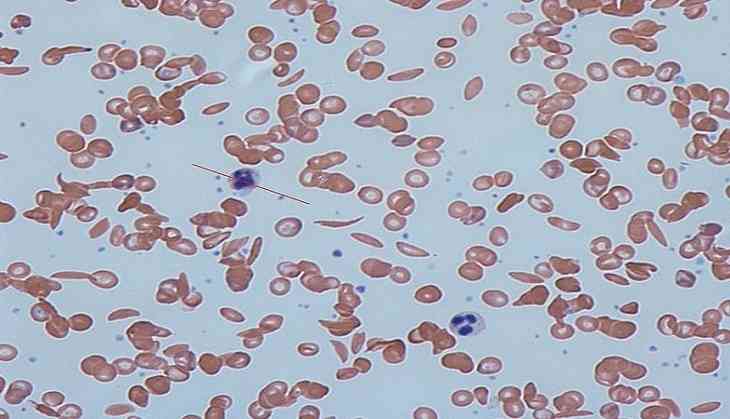Now, it's easier to blunt sickle cell disease

As population of sickle cell poses a formidable challenge, odds have dramatically lessened in its treatment.
The increasing success rate of a particular bone marrow transplant, the only treatment for the disorder, has raised hopes for sickle-sick population of India.
19 June, the 'World Sickle Day' can well be leveraged to create awareness about easier option of its cure being available now.
Swollen hands and feet; episodes of intense pain in the chest, abdomen, joints or bones; and frequent infections are some of the leading symptoms of sickle cell anemia. Because the disease causes the body to have a shortage of red blood cells, it is also characterized by chronic fatigue. In infants, children and teenagers, sickle cell anemia can cause delayed growth and puberty.
It is a very debilitating disease. As found in one of ICMR surveys, about 20 per cent of children with sickle disease died by the age of two and 30 per cent children with SCD among the tribal community die before they reach adulthood.
It has not been easy to tackle this disease in the absence of availability of easy transplant options. But things have changed for better.
Dr Dharma Choudhary, senior consultant and director, Hemato-oncology and Marrow Transplant, BLK Super Speciality Hospital, says, "Bone marrow is the only treatment and curative option available for symptomatic sickle patients but earlier odds were stacked against it. As medicine advances, its treatment has become easier too. Sickle cell disease is a red cell disorder. Lack of matched sibling/related donor limits the option of BMT. Option of unrelated donor BMT is also difficult as there are not many voluntary marrow donors. In such a scenario, haploidentical transplant is the only alternative. So far haploidentical transplant in disease like SCD was very limited due to poor success rate. With improved strategies, we can get good results with relatively less complications."
He further says, "Spreading awareness about this disabling disease is need of the hour and there can be no better day than June 19th: world sickle day to make a beginning."
In India, there is a huge sickle population in MP, CG, Bihar, Maharashtra and some parts of WB. With only option of BMT as cure, patients suffering from SCD in India & across the world can be hugely benefited.
Sickle cell disease (SCD) is the most prevalent inherited blood condition worldwide resulting from single DNA mutation within the beta globin gene. Due to recent population movements, there is gene flow from high allele frequency areas of sub-Saharan Africa, the Middle East, and India to Europe and parts of America. This has led to sizeable sickle cell populations emerging in previously unaffected areas of the world. Each year approximately 300,000 children are born with sickle cell anemia or one of its variants and nearly 80 per cent of these births occur in poor socio-economic countries.
Dr Choudhary says, "SCD has a high prevalence in India, especially in the central and western regions, and poses a considerable health burden. With increasing control of infant mortality and infectious diseases, genetic diseases are assuming a proportionately greater importance; the beta thalassaemias, sickle cell disease, and hemoglobin E disease contributes significantly to morbidity and mortality in India."
The sickle cell mutation was first described in India among the tribal groups in south India but the prevalence of sickle allele is high in both tribal and non-tribal populations. The true incidence of SCD in India is still not known and most of our understanding and knowledge of the natural history of the disease comes from developed countries where effective interventions have resulted in significant reduction in mortality. There are reports that provide interesting insights into SCD in India but most of these are inconclusive based in a single institution or region. Although knowledge about SCD in India is increasing, yet it is very difficult to establish the burden of this problem accurately in the absence of screening programmes, nationwide reporting system or registries.
Dr Choudhary further said, "With increased awareness about diseases like thalassemia, we have been able to prevent the disease to a great extent. Unfortunately there is no such awareness focused towards SCD and so disease burden is still very high in various parts of India like CG, MH, MP, Bihar & few southern states."
-ANI

